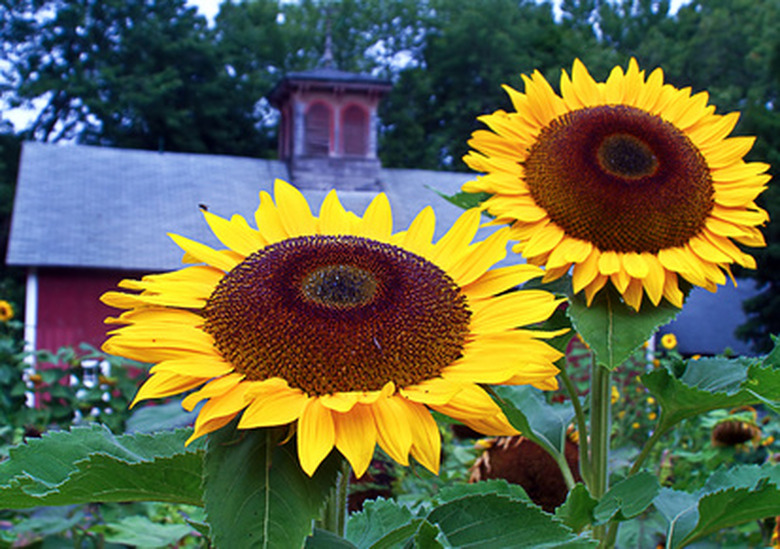Reasons A Sunflower Plant Will Not Flower
Big and bright, the sun-following face of a sunflower (Helianthus annuus) is a quintessential sign of summer. When a plant fails to bloom, something major prevents it, as the fast-growing sunflower's purpose is to form a flower and set seed. Grow sunflowers when no threat of frost remains in your garden.
Lack of Sunlight
Arguably the simplest answer to why a sunflower fails to bloom is a lack of light. These fast-growing annuals relish warmth and light, performing best when they receive no less than 6 hours of direct sun daily. Too little sunlight, even bright indirect light, slows plant development and may retard formation of the flower bud at the top of the sunflower stalk.
Growing Season
Hundreds of varieties of sunflowers exist, from dwarf plants to towering ones and many with differently colored flower petals. As much as these varieties differ in physical characteristics, there may be different maturation rates, the time needed to germinate to flowering and ripening their seed heads. For example, if you plant a sunflower that takes 70 days to mature, as listed on the seed packet, and you plant the seeds only 40 days before the first fall frost, the plant will die before it completes its life cycle.
- Big and bright, the sun-following face of a sunflower (Helianthus annuus) is a quintessential sign of summer.
- When a plant fails to bloom, something major prevents it, as the fast-growing sunflower's purpose is to form a flower and set seed.
Stress
Unhealthy or stressed sunflowers will not grow robustly or perform to gardeners' expectations. Sunflowers need a moist, fertile soil that drains well. Although tolerant of drought, nutrient-poor, sandy soils won't provide the conditions needed for the sunflower to reach its fullest potential. Plants growing in cold or wet soils, too, possess reduced vigor and may succumb to insect pests or diseases such as fungal rot or mildew. Healthy sunflowers rarely suffer any pest or disease problems.
Flower Bud Removed
Sunflowers grow with a singular stem. At the tip of the stem develops the flower. If a young, barely visible flower bud forms at the tip and is damaged or cut off, the plant must regrow a new stem to develop another flower bud. Damage from hail, a bug or bird remains a possibility, or accidentally breaking a stem tip or toppling a sunflower when working in the garden also occurs sometimes. A new replacement flower bud stem(s) must grow from dormant buds at the base of leaves.
- Unhealthy or stressed sunflowers will not grow robustly or perform to gardeners' expectations.
- Plants growing in cold or wet soils, too, possess reduced vigor and may succumb to insect pests or diseases such as fungal rot or mildew.
